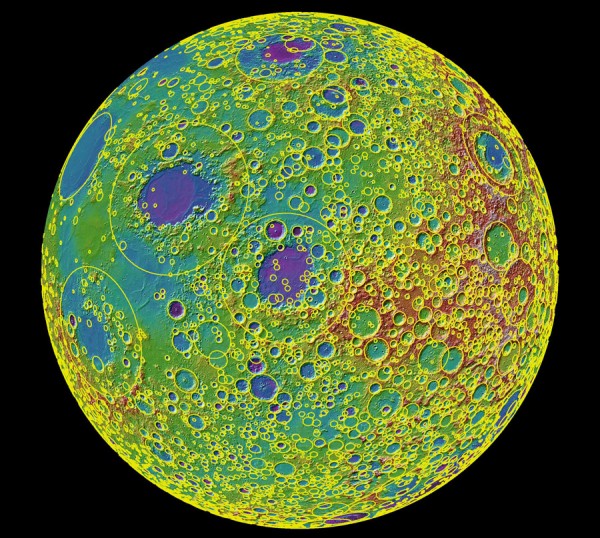NASA’s Lunar Reconnaissance Orbiter is an overachiever, and since it began to circle the moon in June 2009, it’s plumbed the depths of holes, captured the paths of Apollo astronauts, and completed the first-ever high-resolution elevation map:
Recent research suggests that the craters – outlined above in yellow – came in two stages: first with a prehistoric storm of major impacts, and then in a steady trickle of smaller collisions. As a leading theory goes, about 3.9 billion years ago, Jupiter and Saturn wandered into the asteroid belt and flung countless huge rocks in every direction. Under the ensuing assault, the biggest of these meteors perforated the moon’s crust, and on Earth, any nascent life was likely boiled away.
The moral of the story? You should never take your eyes off of a shifty gas giant.
To learn more, see the overviews at Wired and Scientific American, and for the details straight from the horse’s mouth, check out NASA’s briefing and image gallery.
